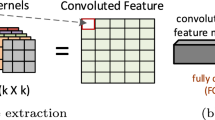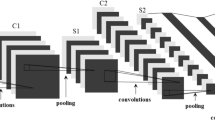Abstract
Due to their greatly increased spectrum efficiency, high-order quadrature amplitude modulation (QAM) formats are especially successful at increasing transmission capacity. QAM is extremely sensitive to nonlinear distortion because of its dense constellation and SNR-hungry configuration. Autonomous neural network (ANN) derived nonlinear decision boundaries that are adaptively created by machine learning techniques can be used to classify symbols. The proposed work focusing on the quadrature amplitude modulation (QAM) scheme, the approach is to formulate an autonomous neural network (ANN) that can predict the class of each symbol from a signal stream of symbols. Experimental accuracy for each ANN's of proposed work achieves 89% by analysing all tests. Comprehensive results are presented with comparisons, demonstrating notable nonlinear mitigation with BER reductions. Additionally, it offers a glimpse into potential future research plans intended to raise the likelihood that predictions would come true and their accuracy.






Similar content being viewed by others
Data availability
Not applicable.
References
Amirabadi, M.A.: A survey on machine learning for optical communication [machine learning view]. arXiv preprint arXiv:05148 (2019). (1909)
Amirabadi, M.A., Kahaei, M.H., Nezamalhosseini, S.A., Vakili, V.: Deep learning for channel estimation in FSO communication system. Opt. Commun. 459, 124989 (2020)
Bose, S.S.C., Alfurhood, B.S., Flammini, F., Natarajan, R., Jaya, S.S.: Decision fault tree learning and differential Lyapunov optimal control for path tracking. Entropy 25(3), 443 (2023a)
Bose, S., Subash Chandra, Shafeeq Ahmed, V.: A review of significant challenges with quantum communication and computing. Int. J. Data Inf. Intell. Comput. 2(2), 55–62 (2023b)
Chen, G., Du, J., Sun, L., Zhang, W., Xu, K., Chen, X., Reed, G.T., Zuyuan He: Nonlinear distortion mitigation by machine learning of SVM classification for PAM-4 and PAM-8 modulated optical interconnection. J. Lightwave Technol. 36(3), 650–657 (2018)
Darwesh, L., Natan, S.: Kopeika. Deep learning for improving performance of OOK modulation over FSO turbulent channels. IEEE Access. 8, 155275–155284 (2020)
Dong, Z., Khan, F.N., Sui, Q., Zhong, K., Lu, C., Alan Pak Tao Lau: Optical performance monitoring: Areview of current and future technologies. J. Lightwave Technol. 34(2), 525–543 (2015)
Ekanayake, N., Vijitha, H.M., Herath, R.: Effect of nonlinear phase noise on the performance of $ M $-ary PSK signals in optical fiber links. J. Lightwave Technol. 31(3), 447–454 (2012)
Ghazisaeidi, A., René-Jean, E.: Calculation of coefficients of perturbative nonlinear pre-compensation for Nyquist pulses. In 2014 The European Conference on Optical Communication (ECOC), pp. 1–3. IEEE, (2014)
Giacoumidis, E., Mhatli, S., Stephens, M.F.C., Tsokanos, A., Wei, J., McCarthy, M.E., Doran, N.J., Andrew, D.: Ellis. Reduction of nonlinear intersubcarrier intermixing in coherent optical OFDM by a fast newton-based support vector machine nonlinear equalizer. J. Lightwave Technol. 35(12), 2391–2397 (2017)
Guiomar, F.P., Pindo, A.N.: Simplified Volterra series nonlinear equalizer for polarization-multiplexed coherent optical systems. J. Lightwave Technol. 31(23), 3879–3891 (2013)
Ip, E.: Nonlinear compensation using backpropagation for polarization-multiplexed transmission. J. Lightwave Technol. 28(6), 939–951 (2010)
Khan, R., Yang, Q., Ullah, I., Rehman, A.U., Tufail, A.B., Noor, A., Rehman, A., Cengiz, K.: 3D convolutional neural networks based automatic modulation classification in the presence of channel noise. IET Commun. 16(5), 497–509 (2022)
Kumar, S.: Analysis of nonlinear phase noise in coherent fiber-optic systems based on phase shift keying. J. Lightwave Technol. 27(21), 4722–4733 (2009)
Kumaraguru, P.V., Kamalakkannan, V., Gururaj, H.L., Francesco Flammini, B.S., Alfurhood, Natarajan, R.: Hessian distributed ant optimized Perron–Frobenius eigen centrality for social networks. ISPRS Int. J. Geo-Information. 12(8), 316 (2023)
Li, M., Yu, S., Yang, J., Chen, Z., Han, Y., Gu, W.: Nonparameter nonlinear phase noise mitigation by using M-ary support vector machine for coherent optical systems. IEEE Photonics J. 5(6), 7800312–7800312 (2013)
Li, W., Guo, Y., Wang, B., Yang, B.: Learning spatiotemporal embedding with gated convolutional recurrent networks for translation initiation site prediction. Pattern Recogn. 136, 109234 (2023)
Liu, X., Wang, Y., Wang, X., Tian, F., Xin, X., Zhang, Q., Tian, Q.: Mixture-of-gaussian clustering-based decision technique for a coherent optical communication system. Appl. Opt. 58(33), 9201–9207 (2019)
Makovejs, S., Millar, D.S., Lavery, D., Behrens, C., Killey, R.I., Seb, J., Savory, Bayvel, P.: “Characterization of long-haul 112Gbit/s PDM-QAM-16 transmission with and without digital nonlinearity compensation.“ Opt. Express 18, no. 12 : 12939–12947. (2010)
Martins, C.S., Bertignono, L., Nespola, A., Carena, A., Guiomar, F.P., Armando, N.: Pinto. Low-complexity time-domain DBP based on random step-size and partitioned quantization. J. Lightwave Technol. 36(14), 2888–2895 (2018)
Miao, J., Xu, S., Zou, B., Qiao, Y.: ResNet based on feature-inspired gating strategy. Multimed Tools Appl 81, 1–18 (2022)
Musumeci, F., Rottondi, C., Nag, A., Macaluso, I., Zibar, D., Ruffini, M., Massimo Tornatore: An overview on application of machine learning techniques in optical networks. IEEE Commun. Surv. Tutorials. 21(2), 1383–1408 (2018)
Saif, W.S., Amr, M., Ragheb, T.A., Alshawi, Saleh, A.: Alshebeili. Optical performance monitoring in mode division multiplexed optical networks. J. Lightwave Technol. 39(2), 491–504 (2020)
Subramanian, M., Shanmugavadivel, K., Nandhini, P.S.: On fine-tuning deep learning models using transfer learning and hyper-parameters optimization for disease identification in maize leaves. Neural Comput. Appl. 34(16), 13951–13968 (2022)
Wang, D., Zhang, M., Cai, Z., Cui, Y., Li, Z., Han, H., Fu, M., Luo, B.: Combatting nonlinear phase noise in coherent optical systems with an optimized decision processor based on machine learning. Opt. Commun. 369, 199–208 (2016)
Wang, X., Zhang, Q., Xin, X., Gao, R., Tian, Q., Tian, F., Wang, C., Pan, X., Wang, Y.: Robust weighted K-means clustering algorithm for a probabilistic-shaped 64QAM coherent optical communication system. Opt. Express. 27(26), 37601–37613 (2019)
Xu, H., Wang, Y., Wang, X., Li, C., Huang, X., Zhang, Q.: A novel nonlinear equalizer for probabilistic shaping 64-QAM based on constellation segmentation and support vector machine. Electronics 11(5), 671 (2022)
Xuan, H., Liu, J., Yang, P., Gu, G., Cui, D.: Emotion Recognition from EEG Using All-Convolution Residual Neural Network, pp. 73–85. International Workshop on Human Brain and Artificial Intelligence. Singapore, Springer Nature (2022)
Zhang, J., Chen, W., Gao, M., Shen, G.: K-means-clustering-based fiber nonlinearity equalization techniques for 64-QAM coherent optical communication system. Opt Express 25(22), 27570–27580 (2017)
Zhang, J., Gao, M., Chen, W., Shen, G.: Non-data-aided k-nearest neighbors technique for optical fiber nonlinearity mitigation. J. Lightwave Technol. 36(17), 3564–3572 (2018)
Funding
This research received no external funding.
Author information
Authors and Affiliations
Contributions
For research articles with several authors, a short paragraph specifying their individual contributions must be provided. The following statements should be used “Conceptualization, methodology done by KP and SDS, software, validation by Veeraprathap, formal analysis, investigation done by GHL, writing—review and editing, funding acquisition by FF. All authors have read and agreed to the published version of the manuscript.”
Corresponding author
Ethics declarations
Conflict of interest
The authors declare no competing interests.
Ethical approval
“Not applicable” for studies not involving humans or animals.
Additional information
Publisher’s Note
Springer Nature remains neutral with regard to jurisdictional claims in published maps and institutional affiliations.
Rights and permissions
Springer Nature or its licensor (e.g. a society or other partner) holds exclusive rights to this article under a publishing agreement with the author(s) or other rightsholder(s); author self-archiving of the accepted manuscript version of this article is solely governed by the terms of such publishing agreement and applicable law.
About this article
Cite this article
Kiran, P., Gururaj, H.L., Flammini, F. et al. Machine learning based 64-QAM classification techniques for enhanced optical communication. Opt Quant Electron 55, 1179 (2023). https://doi.org/10.1007/s11082-023-05472-7
Received:
Accepted:
Published:
DOI: https://doi.org/10.1007/s11082-023-05472-7




